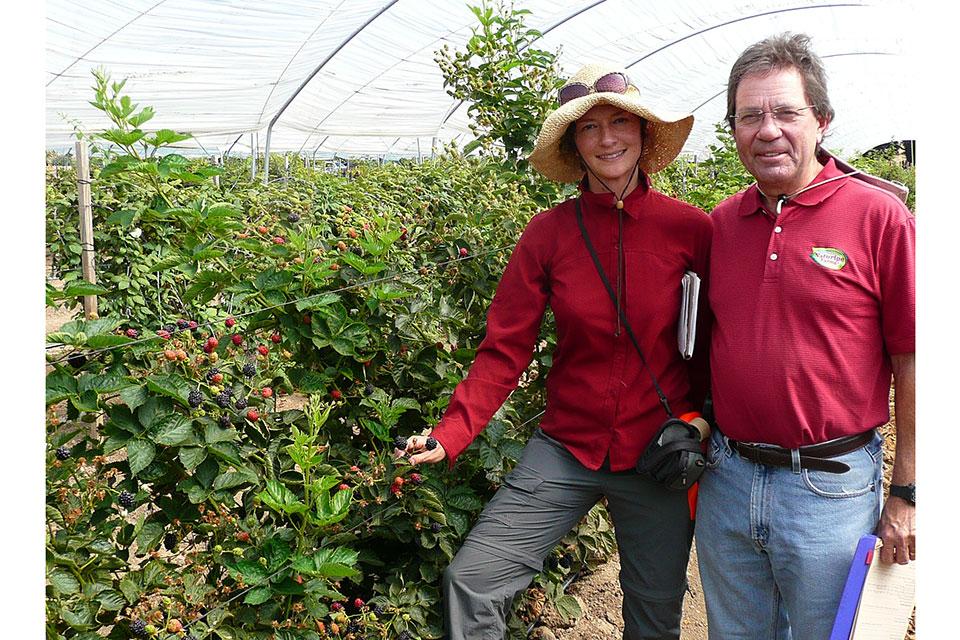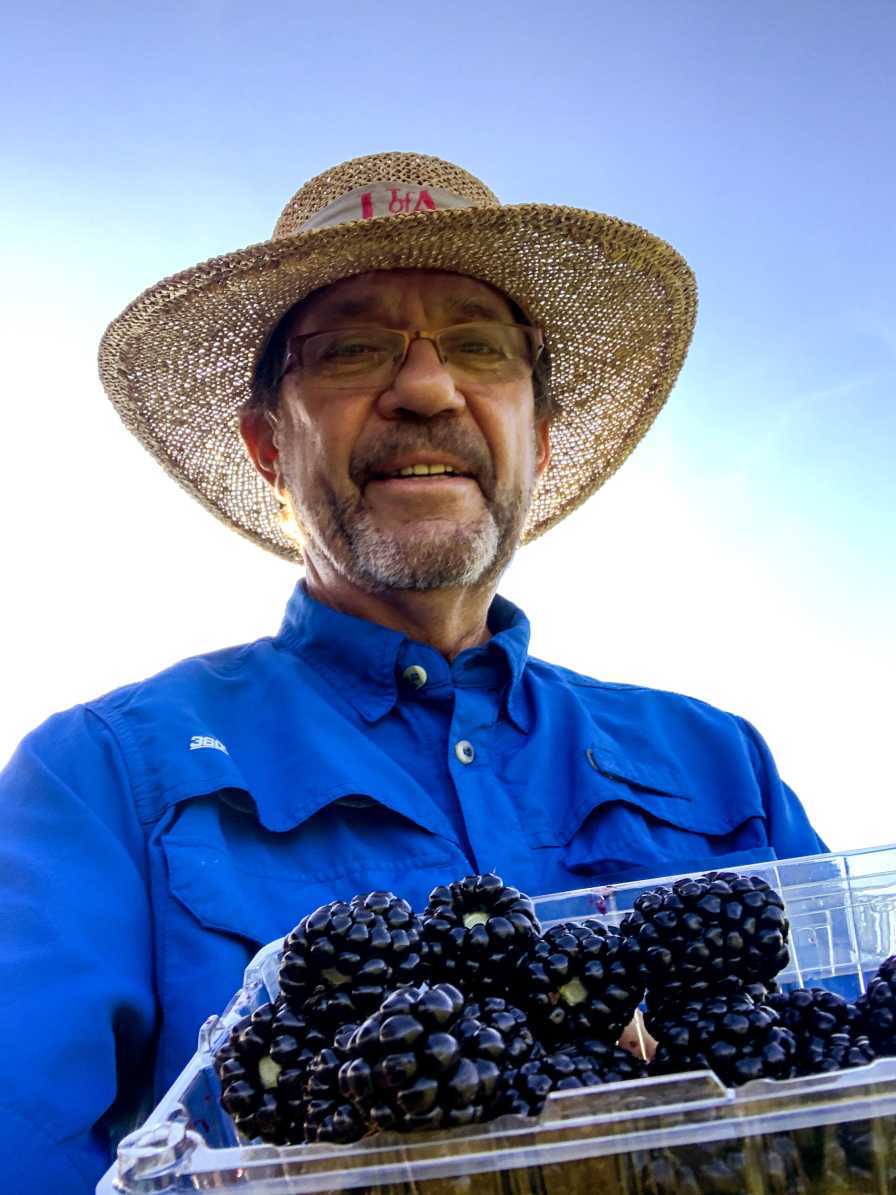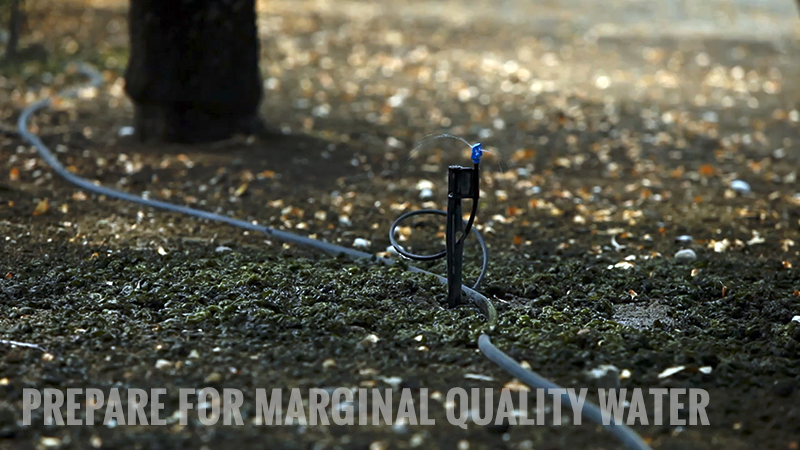Endeavoring To Find out More About Pocket Breeding in Berries
Some months ago, I had a conversation with someone interested in berry breeding, and the first thing asked of me was, “What do you think of pocket breeding?” I quickly remembered that technique of conversation in which, when one is not sure of a word or topic, he or she turns the question back to the original inquirer. I thus asked, “What do you think this is?”
I was not sure of the other person’s knowledge about breeding. The response was in general in the area of attaining breeding germplasm through methods such as simply taking plants for parents in breeding from a source that might not be allowed or legal, or rather a proprietary source. This has become a much hotter topic in recent years.
To discuss this further, I want to be sure the reader knows what the term “germplasm” means. In general, it is the material used in a breeding program, be it named varieties, wild plants, breeding selections, or other sources of genetic variability. A breeding program can only be as good as the germplasm used in it, as the degree of diversity for important traits has to be present to attain the ultimate breeding goals.
BACK IN THE OLDEN DAYS
When I first entered into the world of fruit breeding in 1980, almost all breeding in the U.S. was done by public breeders. Private programs were rare, with the exception of a few programs based in California. Varieties were usually released without any protection, such as a plant patent, and these were free to use by other breeders in their programs. More importantly, public breeders routinely shared breeding selections with other breeders.
Why was this so important? A breeder could work years to improve a trait or traits in an advanced selection, and then when the selection was shared and used by another breeder, quick progress could be made in advancing the traits further, often with the release of a variety simply by crossing with someone else’s selections. Back then, most breeders thought this was part of the mission of public breeding, to help the overall cause of improving traits and varieties.
MONEY AND VARIETY PROTECTION
As the 1980s progressed, variety protection became more common in public programs. A reason for this was that support for public breeding programs began to decline, and income from intellectual property was thought to be a potential source of support.
Two individuals who had significant influence on me were Dr. Jim Moore at the University of Arkansas (who I studied under and eventually took the place of) and Dr. Wayne Sherman at the University of Florida.
Moore filed his first patent application in the early 1980s, for ‘Reliance’ table grape, since he felt it would be more useful in the Midwest, where it performed better than in Arkansas. He thought, “Why not let others help support the program since they will get the benefit of the variety?” He did not know if licensing propagation rights and subsequent royalty collection would work.
Sherman explained to me the concern with sharing advanced germplasm with others, and the idea that others would benefit potentially more from its use in breeding than the originating program. These ideas were foundational for me in later designing breeding program support with a combination of royalty income and advanced selection use for a fee by private breeding programs.

John Clark and Ellen Thompson (representing Hortifrut Genetics), working on cooperative fruit breeding in 2015.
Photo courtesy of John R. Clark
PRIVATE BREEDING EXPANSION
Today, privately bred berry varieties rival public varieties in importance to our berry industries. Private programs are increasing in importance while many public programs are being reduced in importance in the new variety world. Private programs almost always build their breeding efforts on publicly released germplasm.
In berries, a good example is blueberries, where the origin of low-chill blueberries was the University of Florida. We would not have the huge production of blueberries in subtropical climates in the world today without the advances made at UF. The germplasm used was most often varieties from UF, and crossing and selection was done in both public and private programs. It is hard to believe the advances in the expansion of blueberry production to low- and no-chill environments, compared to the early efforts with high-chill blueberries of Frederic Coville with the USDA-ARS in the early 1900s that yielded varieties limited only to temperate climates.
CHANGING GERMPLASM AVAILABILITY
With decreased sharing of germplasm among public breeders (as well as their reduced profile in the overall variety picture), and near complete restriction of use of proprietary germplasm outside of private programs, berry breeding has entered into a new era. Maybe that is what gave rise to the “pocket breeding” question posed to me. In a subsequent column, I will share further thoughts on germplasm and berry breeding advancement in more restricted germplasm days as we are in now.
Let the berry good times roll!










